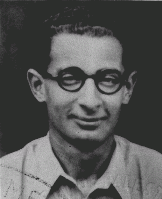You searched for: FACEBOOK代全世界推广开户【TG飞机:@bapingseo】谷歌seo网站推荐【TG电报:@bapingseo】尼日利亚做广告【Telegram:@bapingseo】128棋牌下载hi合乐888手机?20220707j5C1Wb.html
<< Previous | Displaying results 401-450 of 1617 for "FACEBOOK代全世界推广开户【TG飞机:@bapingseo】谷歌seo网站推荐【TG电报:@bapingseo】尼日利亚做广告【Telegram:@bapingseo】128棋牌下载hi合乐888手机?20220707j5C1Wb.html" | Next >>
-
Stevo Jugovic
ID CardStevo, who was Serbian Orthodox, was a blacksmith, gunsmith and farmer in the village of Pucari. When he was 20, he went to live in the United States in Minnesota for four years. In 1912 he returned to Pucari, but when his wife and two of his sons died from influenza, he left again for America. In 1923 he returned to Pucari, where he remarried and raised four more children. 1933-39: Stevo had saved some money in the United States, and became one of the wealthiest farmers in his village. He acquired…

-
Kosta (Kojo) Naprta
ID CardKosta was the oldest of five children born to Serbian Orthodox parents in a poor farming village. Podum was on the slopes of Mount Um in the Croatian part of Yugoslavia. After finishing secondary school, Kosta immigrated to the United States. But when World War I broke out in 1914, he returned to Podum. In 1920 he married Anka, a Serb woman from his village, and they raised eight children. 1933-39: Kosta would read the newspaper to his friends and neighbors who could not read. He supported his family by…
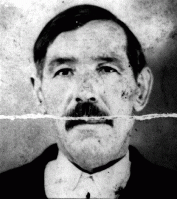
-
Norbert J. Yasharoff describes the trial and sentencing of a Jewish man falsely charged with economic crimes
Oral HistoryAnti-Jewish measures took effect in Bulgaria after the beginning of World War II. In March 1941, Bulgaria joined the Axis alliance and German troops passed through Sofia. In May 1943, Norbert and his family were expelled to Plevin in northern Bulgaria, where they stayed with relatives. After the advance of the Soviet army in 1944, Norbert and his family returned to Sofia.

-
Joseph Maier describes former Auschwitz commandant Rudolf Hoess at the Nuremberg trial
Oral HistoryJoseph immigrated to the United States in 1933 after finishing university in Leipzig. His parents and brother had left Germany earlier for the United States. Joseph attended Columbia University. From 1940 to 1943 he was assistant editor for a New York German-Jewish newspaper. In 1944, he worked in the American embassy in Britain as a propaganda analyst. He went to Nuremberg, Germany, as an interpreter in 1946. He analyzed materials and transcripts, and participated in many interrogations for the Nuremberg…
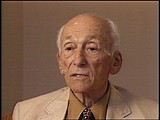
-
SS: Decline, Disintegration, and Trials
ArticleIn 1945, the power and influence of the SS in Nazi Germany started to decline. Learn more about the subsequent disintegration and postwar trials.

-
Ardeatine Caves Massacre
ArticleNow a national memorial site, the Ardeatine Caves outside Rome were the site of a German reprisal for a bombing by Italian resistance operatives in March 1944.
-
Blood Libel
ArticleBlood libels were false allegations that Jews used the blood of non-Jewish children in rituals. Nazi propagandists used this false charge in their antisemitic propaganda.

-
The Oneg Shabbat Archive
ArticleBegun as an individual chronicle by Emanuel Ringelblum in October 1939, the Oneg Shabbat underground archive became the secret archive of the Warsaw ghetto.

-
Jacob Wiener
ArticleExplore Jacob Wiener’s biography and learn about his experiences during Kristallnacht in Würzburg, Germany.

-
Martin Weiss
ArticleMartin Weiss and his family were deported to Auschwitz in 1944. Explore Marty’s biography and his description of arrival in Auschwitz.

-
Herzogenbusch Main Camp (Vught)
ArticleThe Herzogenbusch concentration camp in the Netherlands began functioning in January 1943. Learn about its establishment, administration, prisoners, and conditions there.

-
Timeline of the German Military and the Nazi Regime
ArticleKey dates illustrating the relationship between Germany’s professional military elite and the Nazi state, and the German military’s role in the Holocaust.
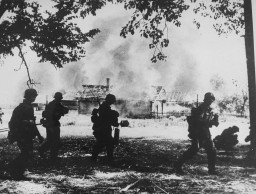
-
Felix Horn describes postwar emigration with the Brihah movement and adjustment to life after the war
Oral HistoryFelix was born to an assimilated Jewish family in Lublin, Poland. His father was a locksmith and his mother was a singer. Following the German invasion of Poland on September 1, 1939, Felix fled east to Rovno and then to Soviet-occupied Lvov, where he was accepted at a medical school. After the German invasion of the Soviet Union in June 1941, Felix was taken to a labor camp. He escaped and returned to Lublin, and found that his family had been forced into the ghetto established there. After the…
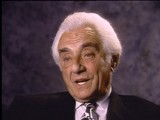
-
Thomas Buergenthal describes a forced-labor camp in Kielce
Oral HistoryThomas's family moved to Zilina in 1938. As the Slovak Hlinka Guard increased its harassment of Jews, the family decided to leave. Thomas and his family ultimately entered Poland, but the German invasion in September 1939 prevented them from leaving for Great Britain. The family ended up in Kielce, where a ghetto was established in April 1941. When the Kielce ghetto was liquidated in August 1942, Thomas and his family avoided the deportations to Treblinka that occurred in the same month. They were sent…

-
Joseph Goebbels
ArticleJoseph Goebbels, Nazi politician, propagandist, and radical antisemite, was Reich Minister for Propaganda and Public Enlightenment from 1933 until 1945.

-
Sighet
ArticleLearn about the history of Sighet, birthplace of Elie Wiesel. The Jewish population of Sighet was deported to Auschwitz in May 1944. Most of the deportees were gassed on arrival.
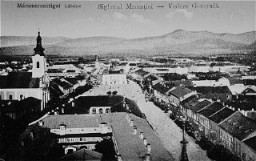
-
The United States and the Refugee Crisis, 1938–41
ArticleNazi Germany’s territorial expansion and the radicalization of Nazi anti-Jewish policies triggered a mass exodus. Learn about the US and the refugee crisis of 1938–41.
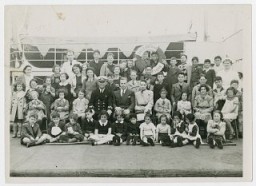
-
Walter Szczeniak
ID CardWalter was the oldest of eight children born to Polish-Catholic immigrant parents in a town near Boston, Massachusetts. The family moved back to Poland when Walter was a child, and lived on a family farm near Ostroleka in northern Poland that Walter's mother had inherited. Because his father's American nickname was "Stetson," Walter was mistakenly registered as "Charles Stetson" on his American birth certificate. 1933-39: After Walter completed secondary school, his father sent him to the University of…

-
David Bayer
ID CardDavid was the second of four children born to religious Jewish parents in Kozienice, a town in southeastern Poland. His father, Manes, owned a shoe factory that supplied stores throughout the country. His mother, Sarah, took care of the home and children, and helped in the factory. Kozienice had a thriving Jewish community that constituted over half of the town's population. 1933–39: For most of the 1930s, David spent his days going to school, playing sports, and working in his father's shoe factory.…

-
György (George) Pick
ID CardGyörgy was the only child of middle class Jewish parents living in the Hungarian capital of Budapest. His father, Istvan, was an engineer responsible for producing hydraulic grape presses for wineries. His mother, Margit, worked as a legal secretary. 1933–39: In 1938 and 1939, Hungary’s authoritarian government passed the first in a series of major anti-Jewish laws. The legislation severely restricted the participation of Jews in the economy and defined them in racial terms, much like the Nuremberg…
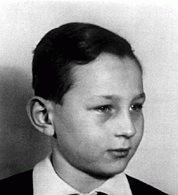
-
Maurits Wijnberg
ID CardMaurits was one of four children born to religious Jewish parents living in the town of Leek. When he was 12, the Wijnbergs moved to the town of Zwolle, where they ran a kosher hotel. That same year, Maurits became ill with meningitis. After he recovered, he worked hard to compensate for missed school and became an exceptional student. 1933-39: Along with his younger sister, Maurits was active in the local Zionist organization. One of the group's activities was raising money for Palestine [Yishuv]. Every…

-
Claude Brunswic
ID CardClaude was one of five children born to Jewish parents in the university city of Heidelberg. His father, a physician specializing in internal medicine, had his practice on the first floor of the apartment building in which the family lived. Claude was an avid swimmer until November 1932, when local Nazi party edicts forbad Jews to use the city pool where he swam. 1933-39: In January 1933, just after Hitler became chancellor of Germany, hoodlums attacked Jewish-owned businesses in Heidelberg. They broke…
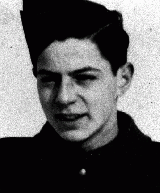
-
Bernard Rechnitz
ID CardBernard was raised by Jewish parents in the small southwestern Polish town of Bedzin. In 1930 Bernard moved with his wife, Ruchla, to the nearby city of Katowice, where he owned a wholesale leather business. The couple lived with their two children, Moses and Genia, in a three-bedroom, upper-floor apartment on Jordana Street. 1933-39: In 1939 Bernard, who was a Zionist, decided the family should emigrate to Palestine [the Yishuv]. His son, Moses, had been the target of antisemitic taunts at school.…
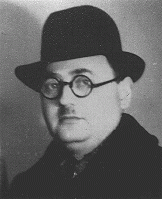
-
Israel Cendorf
ID CardIsrael was born into a religious Hasidic family who hoped he would become a rabbi. But Israel rebelled and apprenticed himself to a printer when he was 16. He read constantly, deepening his sympathy with the workers' struggle, and he soon began to write his own revolutionary songs. His first book of poems, The Red Agenda, was warmly received. 1933-39: In 1933, the year Hitler became chancellor of Germany, Israel moved to Paris. But the city was wracked by unemployment, and Jewish immigrants were in…
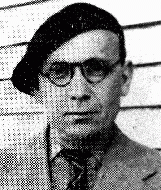
-
Ernest Domby
ID CardErnest's father was a professional musician who toured with a Roma ("Gypsy") band and was often away for several months at a time. At home in Teplice-Sanov, a town in the Sudetenland near the Czech-German border, Ernest's mother took care of Ernest and Elizabeth, his younger sister, and the children's invalid grandmother. Ernest's uncles, Rudolf and Viktor, helped the family. 1933-39: In Teplice-Sanov Ernest was expelled from secondary school for being Jewish—his Uncle Viktor then helped to get him into…
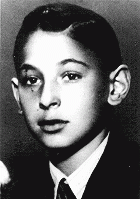
-
Jozef Rapaport
ID CardJozef was raised in a religious Jewish family. When he was a baby, his father died and his mother was left to care for him and his three older sisters. The family was poor, but Jozef was determined to have a good education. He put himself through university in Prague, and then went on to earn a Ph.D. in economics in Vienna. In 1931 he married Leah Kohl, and the couple settled in Warsaw. 1933-39: The Rapaports lived in the suburbs, and Jozef worked as a banker. His daughter, Zofia, was born in 1933. Jozef…
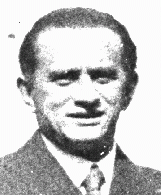
-
Franco Cesana
ID CardFranco was born to a Jewish family living in the northern Italian city of Bologna. Even though a fascist leader, Benito Mussolini, came to power in Italy in 1922, Bologna's Jews continued to live in safety. Like many Italian Jews, Franco's family was well integrated in Italian society. Franco attended public elementary school. 1933-39: When Franco was 7, Mussolini enforced "racial" laws against the Jews: Franco was expelled from school, and went instead to a Jewish school hastily organized in makeshift…
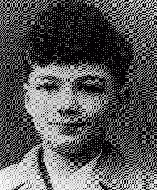
-
Nikola Mrvos
ID CardThe oldest of five children, Nikola was born in a small village in the Croatian part of Yugoslavia. Like his parents, Nikola was baptized in the Serbian Orthodox faith. After receiving his medical degree from Prague University, he married, and in 1912 moved with his wife to Serbia. During World War I he served in the Serbian army, and then settled in Novi Sad where he co-owned a medical clinic. 1933-39: Nikola and his wife raised three children in Novi Sad. Then difficult times brought on by the 1930s…
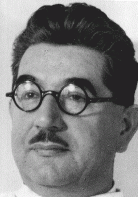
-
Jeno Muhlrad
ID CardJeno was the youngest of five children born to Jewish parents living in a suburb of Budapest. His father was a wholesale merchant who sold beer to restaurants and stores. After receiving a university diploma, Jeno became a pharmacist. He and his wife, Aranka, and their two children, Eva and Andras, shared a large old house in Ujpest with Jeno's father and other members of the extended family. 1933-39: Jeno's friends and family have helped him raise the large amount of money he needs to lease his own…

-
Michal Scislowski
ID CardMichal was one of two children born to Catholic parents living in Siedlce, a large town some 65 miles east of Warsaw. Michal's father was an intelligence officer in the Polish army. Because his duty station frequently changed, the family lived in several towns along the Polish-Soviet border. As a child, Michal enjoyed photography and was active in the boy scouts. 1933-39: Michal's family was living in Wilejka, a town near Vilna, when the Germans attacked Poland on September 1, 1939. The Soviet army…
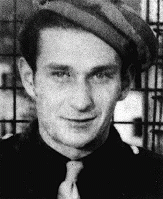
-
Hanandel Drobiarz
ID CardHanandel was raised with his three brothers and sisters in the town of Kozlow, where his family sold grain and livestock. The family was religious, and they observed the Sabbath and all Jewish holidays and dietary laws. When Hanandel was 5, he began studying Hebrew, the Bible, prayers, and Jewish history. 1933-39: At age 14 Hanandel was apprenticed to his uncle in Sosnowiec as a tinsmith. He worked for his uncle during the day and attended trade school at night. When he graduated from trade school he…

-
Walther Hamann
ID CardWalther was born in the state of Thuringia in east central Germany. Though his parents were Lutheran, Walther became a Jehovah's Witness in 1923. After becoming a master baker and confectioner in 1924, Walther worked in various coffeehouses in Plauen, Magdeburg and Duesseldorf. In 1928 he graduated from a professional school. He married and had two sons. 1933-39: In 1933 Walther became a pastry-making manager at the Cafe Weitz on Duesseldorf's Koenigsallee. The Gestapo arrested him at the cafe in 1937…

-
Max Rosenblat
ID CardMax's parents, Taube and Itzik, first met as children in 1925. Taube was the daughter of a tailor who hired apprentices in his shop, and Itzik was one such apprentice. The Jewish youngsters fell in love and dreamed of getting married even though Taube's family frowned upon the match. 1933-39: In 1938 Taube and Itzik married. The couple lived in an apartment on 49 Zeromskiego Street in Radom, where Itzik opened a women's tailor shop. Max was born in July 1939. He had curly hair and blue eyes like his…
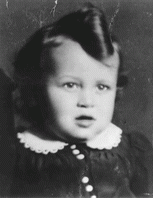
-
Yosel Coller
ID CardOne of six children, Yosel was raised in a religious Jewish family in Lodz, an industrial city in western Poland. His father was a businessman. At the age of 6, Yosel began attending a Jewish day school. His two older sisters attended public school in the morning and religious school in the afternoon. Yosel spent much of his free time playing soccer with his brothers. 1933-39: Yosel's family lived in a modest house in the northern section of Lodz. He went to a Jewish day school and had many friends there.…
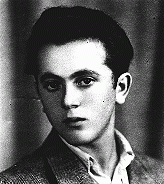
-
Benjamin Bornstein
ID CardBenjamin and his younger brother Zigmush were born to Jewish parents in the industrial city of Lodz. Lodz was Poland's second biggest city before the war, and one-third of its inhabitants were Jewish. Benjamin's father, Moshe, owned a candle factory, and his mother, Brona, was a nurse. 1933-39: In 1939, as Benjamin began the third grade, the Germans occupied Lodz. Jews were forbidden to ride buses, and were ordered to wear yellow stars. Because the Germans sometimes grabbed Jews off the streets for forced…
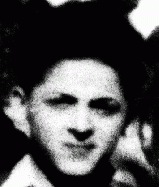
-
Yakob Braun
ID CardYakob's town of Wloclawek was located on the Vistula River. He and his brother Abraham studied Hebrew and German in addition to Polish. Yakob met his bride Machla through a Jewish matchmaker, and after marrying they lived in Lodz. Yakob ran the family textile business until 1938, when he invested in real estate. He became landlord of an apartment building, where he and his family also lived. 1933-39: When the Nazis expelled the Polish Jews from Germany in 1938, Yakob established a relief organization in…

-
Herschel Rosenblat
ID CardHerschel was the youngest of three sons born to Yiddish-speaking Jewish parents. When Herschel was a child, his family moved to Radom, an industrial city which had a large Jewish population. By 1930, Herschel had finished his schooling and was helping in his father's shoemaking business. With the help of a friend, he later found a full-time job as a house painter. 1933-39: Herschel's career as a painter was interrupted for two years when he was drafted into the Polish cavalry at the age of 20. When…

-
Henoch Kornfeld
ID CardHenoch's religious Jewish parents married in 1937. His father, Moishe Kornfeld, and his mother, Liba Saleschutz, had settled in Kolbuszowa, where Henoch's mother was raised. There, Liba's father bought the newlyweds a home and started his new son-in-law in the wholesale textile business. 1938-39: Henoch was born in late 1938, and was raised among many aunts, uncles and cousins. Around Henoch's first birthday, Germany invaded Poland and soon reached Kolbuszowa. Polish soldiers on horses tried to fight…
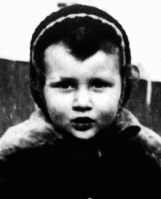
-
Rev. Marian Jacek Dabrowski
ID CardMarian was raised by Catholic parents in Niewodowo, a town in Poland's Bialystok Province near Lomza. His family lived there under Tsarist rule until 1918, when Poland regained its independence. Following high school, Marian joined the Capuchin Franciscan Order of Friars. After eight years of study in France and Italy, he returned to Poland to teach philosophy to students of his order. 1933-39: When Germany invaded Poland in September 1939, Marian was at his monastery near Grodno. They evacuated the…
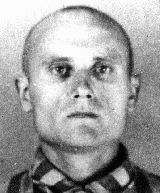
-
Hersh Gordon
ID CardHersh was born to a Jewish family in Kovno, the capital of independent Lithuania. Hersh's father was a mechanic in a textile factory, and his mother had worked as a hat designer until he was born. The Gordons lived on the first floor of Hersh's grandfather's apartment building. Eight-year-old Hersh was in the third grade at public elementary school. 1933-39: In the summers Hersh and his mother would go to his Aunt Ettel and Uncle Abraham in a small town not far away. They'd take a boat down the river to…
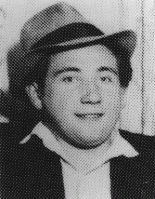
-
Arthur Menke
ID CardArthur was born to a Jewish family in Germany's largest port city, Hamburg. His father owned a small factory that manufactured rubber stamps. In the early 1930s, Hamburg was home to the fourth largest Jewish community in Germany, which had numerous social and cultural institutions. 1933-39: By 1935 conditions for Hamburg's Jews were bad. Arthur's family was moved to another part of town and in 1938, the Nazis seized his father's business. On national holidays many German citizens unfurled red, white and…
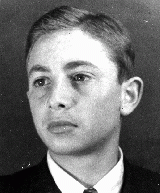
-
Mendel Rozenblit
ID CardMendel was one of six children born to a religious Jewish family. When Mendel was in his early 20s, he married and moved with his wife to her hometown of Wolomin, near Warsaw. One week after the Rozenblits' son, Avraham, was born, Mendel's wife died. Distraught after the death of his young wife and left to care for a baby, Mendel married his sister-in-law Perele. 1933-39: In Wolomin Mendel ran a lumber yard. In 1935 the Rozenblits had a daughter, Tovah. When Avraham and Tovah were school age, they began…

-
Ben Stern
ID CardBen was born to Jewish parents in Warsaw. When Ben was 7, his family moved to Mogielnica, about 40 miles from Warsaw. Ben's father spent much of his time studying religious texts. His wife managed the family liquor store. Ben attended public school during the day and was tutored in religious studies in the evening. 1933-39: After attending school in Warsaw, Ben returned home to help in the family's liquor store. One day, there was a mass demonstration in town. People chanted, "Don't buy from the Jews!"…
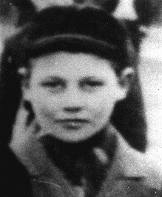
-
Isadore Frenkiel
ID CardIsadore and his wife, Sossia, had seven sons. The Frenkiels, a religious Jewish family, lived in a one-room apartment in a town near Warsaw called Gabin. Like most Jewish families in Gabin, they lived in the town's center, near the synagogue. Isadore was a self-employed cap maker, selling his caps at the town's weekly market. He also fashioned caps for the police and military. 1933-39: Isadore felt the pinch of the Depression, but although business was poor, he was able to provide for his family. Shortly…

-
Franz Monjau
ID CardAfter secondary school, Franz studied painting at Duesseldorf's Academy of Fine Arts, eventually shifting to art education. He joined an avant-garde group rebelling against traditional painting. Later, he taught art to high school students. For Franz the drift towards fascism was frightening, as was the increasing antisemitism. But being only half Jewish, he did not feel worried about his personal safety. 1933-39: Hitler became chancellor of Germany on Franz's thirtieth birthday. Five months later Franz…
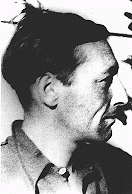
-
Schloma Wolf (Willy) Szapiro
ID CardBorn to a Jewish family, Willy left Poland at age 20 and emigrated to Palestine. He became active in the workers' organization to end the British mandate there. His activities led to his arrest on May 1, 1931. After serving a two-year prison sentence, Willy was expelled from Palestine. 1933-39: In 1933 Willy left Palestine for Austria, where he joined the ranks of the workers' movement. The economic depression in Austria gave momentum to the movement's cause, and Willy and his friends were closely watched…
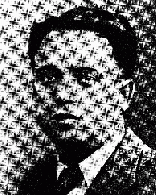
-
Hans Heimann
ID CardHans was born to a Jewish family in the Austrian capital of Vienna. His parents ran a successful export shop for ladies' hats and sold their wares to many different countries. As a boy, Hans attended a private, preparatory school in which courses were taught in both English and German. 1933-39: Hans was attending business school when the Germans annexed Austria in 1938. Hans and his family watched from their window as German troops, led by Hitler, goose-stepped into Vienna. Hans was immediately forced out…
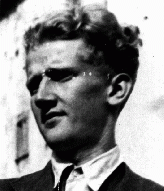
-
Michel Margosis
ID CardMichel's parents were Russian-born Jews. His father had been a police official in Russia who had been deported to Siberia for being an outspoken Zionist. After escaping, he and his wife had made their way to Belgium, and two of their four children, including Michel, were born in Brussels. 1933-39: In Brussels Michel's father owned and edited two newspapers, one French and one Yiddish. As a kid, Michel enjoyed reading comics like "Yordi," who in the United States is known as Superman. A day after his…
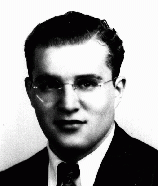
-
Thomas Pfeffer
ID CardThomas' father, Heinz, was a German-Jewish refugee who had married Henriette De Leeuw, a Dutch-Jewish woman. Frightened by the Nazi dictatorship and the murder of Heinz's uncle in a concentration camp, they immigrated to the Netherlands when Henriette was nine months pregnant with Thomas' older brother. They settled in Amsterdam. 1933-39: Thomas, also known as Tommy, was born 18 months after his older brother, Jan-Peter. In 1939 the parents and brother of Tommy's father joined them in the Netherlands as…

-
Frederick R. Wohl
ID CardFrederick was born to a Jewish family in the resort city of Baden-Baden, located in Germany's Black Forest region. His father owned a pharmacy there. His parents were proud German citizens and Frederick's upbringing was not religious. He was sent to Switzerland on a student exchange program just before the Nazis came to power in 1933. 1933-39: Back in Germany Frederick worked in a machine factory for two years but was fired for being Jewish. In Frankfurt to look for work, he went to a Mardi Gras festival.…
